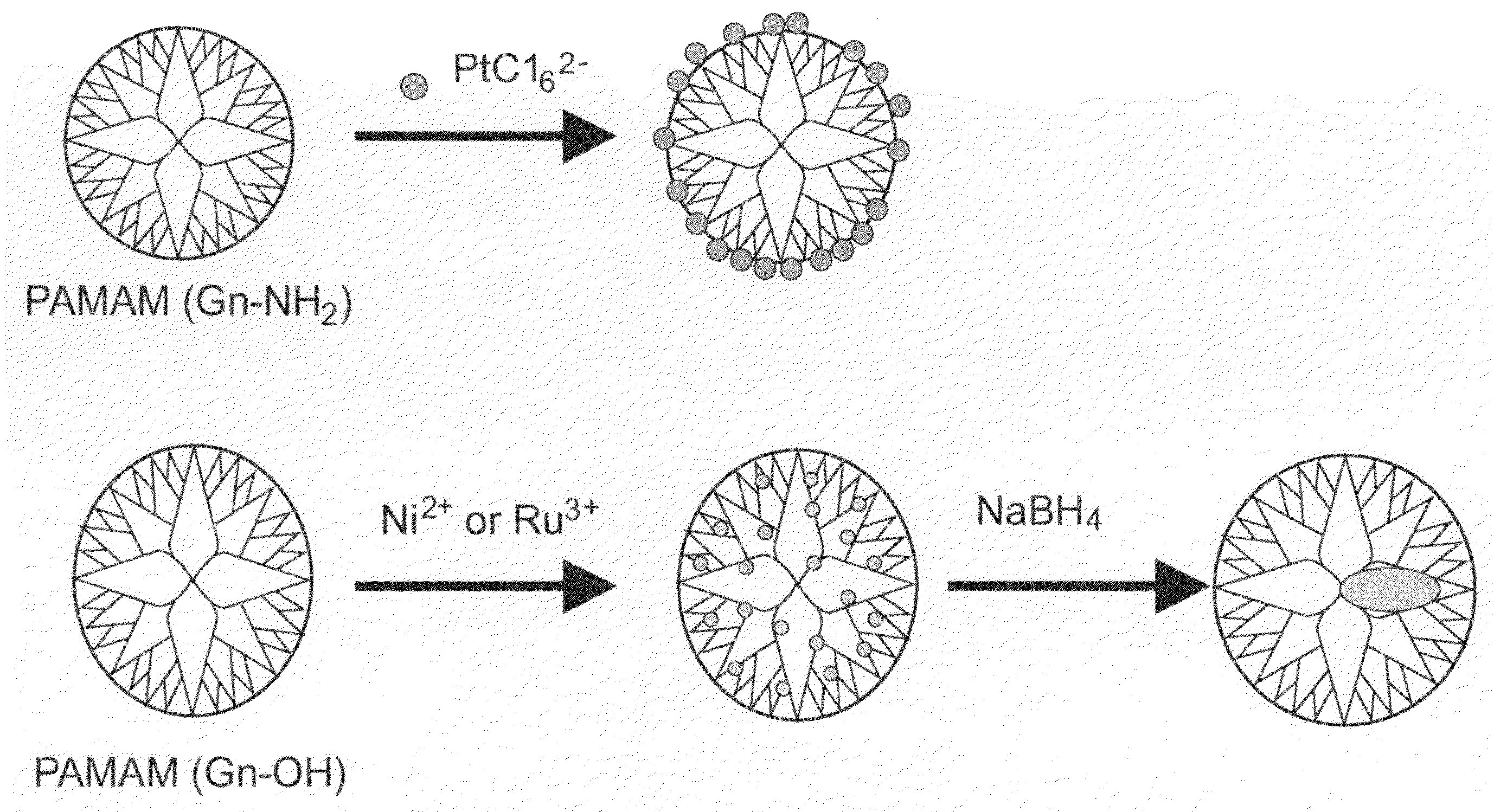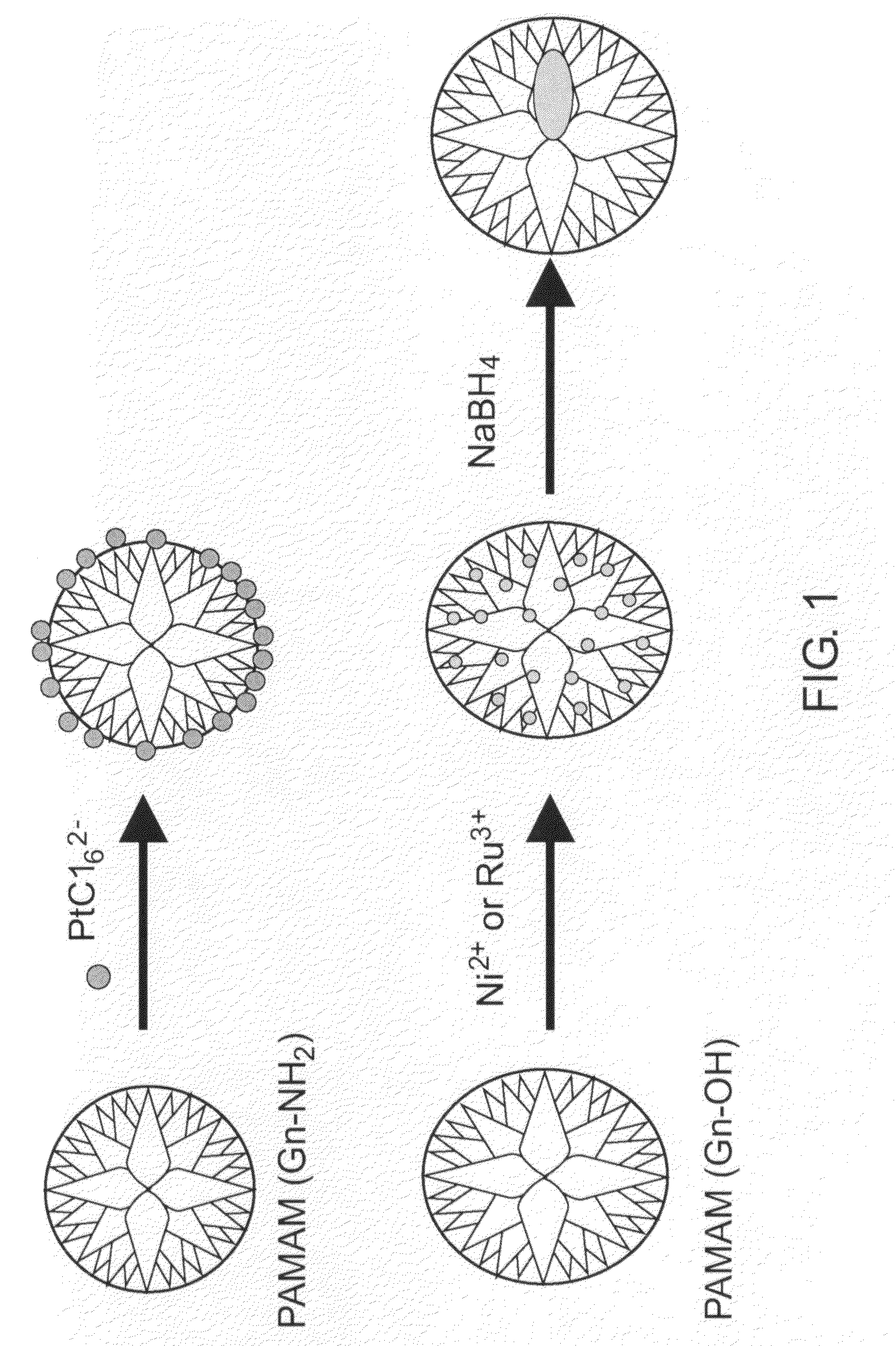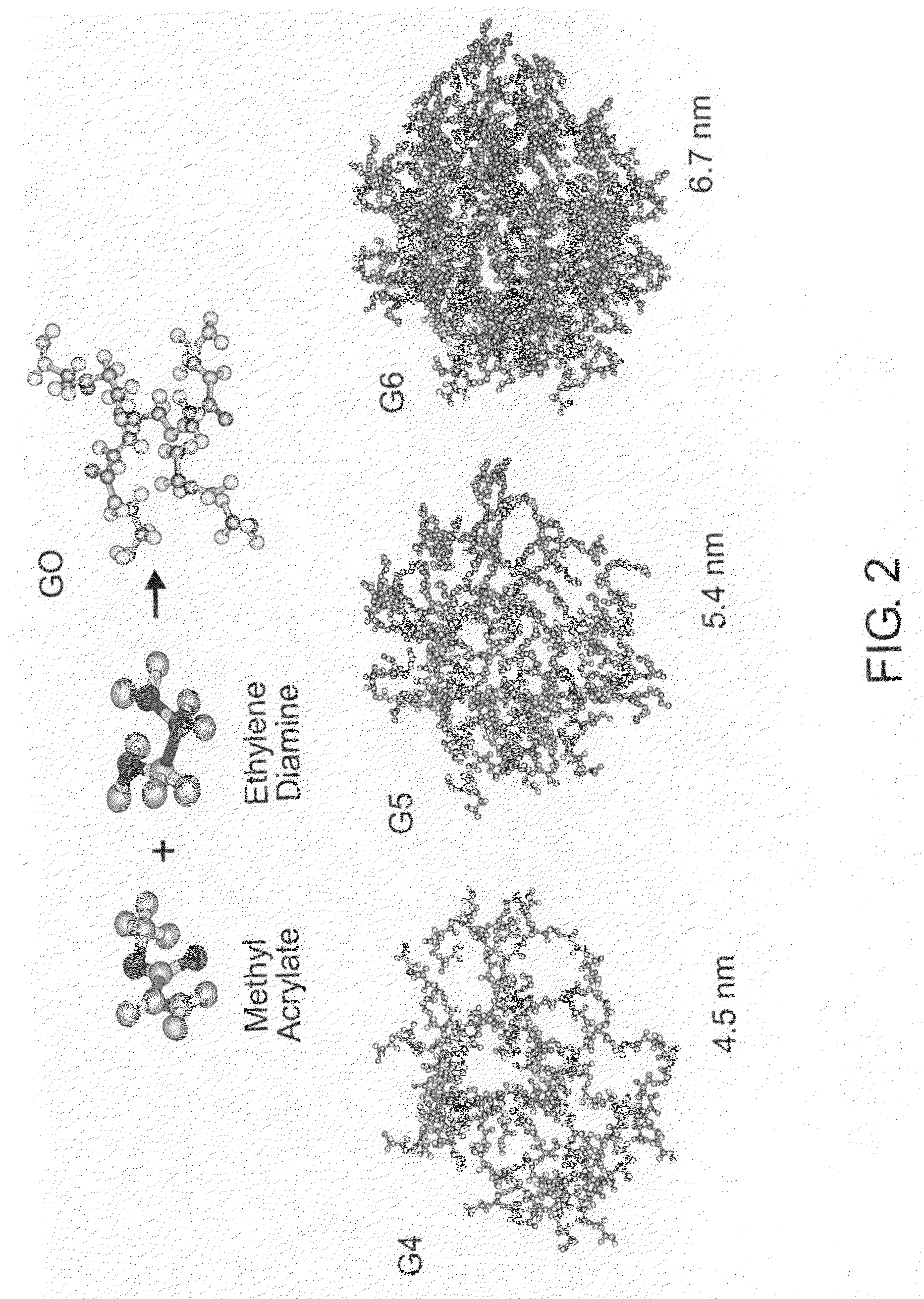Fabrication of metallic hollow nanoparticles
- Summary
- Abstract
- Description
- Claims
- Application Information
AI Technical Summary
Benefits of technology
Problems solved by technology
Method used
Image
Examples
Embodiment Construction
should be read together with the accompanying Drawings, wherein:
[0011]FIG. 1 is a schematic depicting nanoparticle synthesis derived from a dendrimer template;
[0012]FIG. 2 is a drawing depicting the growth of poly(amidoamine) dendrimer[10];
[0013]FIG. 3 is a schematic depicting fabrication of hollow nanoparticles using a dendrimer template;
[0014]FIG. 4a is a drawing prepared from an FE-SEM image of hollow Au nanoparticles prepared by the seeding method;
[0015]FIG. 4b is a drawing prepared from an FE-SEM image of hollow Au nanoparticles prepared by the seedless method;
[0016]FIG. 4c is a drawing prepared from an STEM image of hollow Au nanoparticles prepared by the seeding method;
[0017]FIG. 4d is a drawing prepared from an STEM image of hollow Au nanoparticles prepared by the seedless method; and
[0018]FIG. 5 is a graph depicting the UV-Visible absorption spectra of hollow Au nanoparticles prepared by the seeding method and the seedless method.
DETAILED DESCRIPTION OF THE INVENTION
[0019]T...
PUM
| Property | Measurement | Unit |
|---|---|---|
| Structure | aaaaa | aaaaa |
| Semiconductor properties | aaaaa | aaaaa |
| Thermal properties | aaaaa | aaaaa |
Abstract
Description
Claims
Application Information
 Login to View More
Login to View More - R&D
- Intellectual Property
- Life Sciences
- Materials
- Tech Scout
- Unparalleled Data Quality
- Higher Quality Content
- 60% Fewer Hallucinations
Browse by: Latest US Patents, China's latest patents, Technical Efficacy Thesaurus, Application Domain, Technology Topic, Popular Technical Reports.
© 2025 PatSnap. All rights reserved.Legal|Privacy policy|Modern Slavery Act Transparency Statement|Sitemap|About US| Contact US: help@patsnap.com



